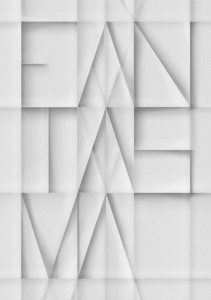ART-CITIES:Stockholm-Fantasma
In his site-specific installations, Adrián Villar Rojas builds worlds we have never seen before, places we have never been to. He describes his practice as an organic process. An idea, channelled via discussions and collaborators, grows into a work, an exhibition, an inclusive performance. His starting point is often a story taken to its utmost limit, a fiction set on the verge of something absolute that involves a series of conditions or rules to relate to.
By Dimitris Lempesis
Photo: Moderna Museet Archive

In “Fantasma”, Villar Rojas explores how a traditional museum exhibition – where objects are categorised and preserved for posterity – would function for his practice. The exhibition title covers several aspects of absence and memory.. The exhibition also embraces another obsession, that of the artist’s own disappearance: “What will be left of my work to show when I no longer exist?”, not least in the void that remains after artistic projects that no longer exist in the material world have been reduced to reminiscences and documentation. In the exhibition spaces, the surreal dimensions and artificial light of the elevated museum environment seem to suggest a mausoleum. The exhibition opens with two monuments: Michelangelo’s David in Florence and the recently demolished Columbus monument in Buenos Aires, juxtaposed in a negative space shaped by sealed chambers, secret walls and blind alleys, spatial and ideological. A piece from an early installation by the artist, is a personal monument of a different kind, one of the few key works salvaged in the artist’s oeuvre, yet inevitably in a state of decline. The largest gallery is dominated by a sculpture, a podium that appears to challenge any notion of man as the measure of all. As onlookers, we are involved in a choreography around a collection of rare objects in transformation that have become almost impossible to classify as flora, fauna or mineral. Adrián Villar Rojas compares his practice to a virus that lives in and off the art world. Although rarely overtly political, his works are ideologically charged in how they are produced and positioned outside any economy. In these works, a radical ending is inscribed in each work, as in a drama or in life itself.
Info: “Fantasma”, Curating: Lena Essling & Matilda Olof-Ors, Moderna Museet, Skeppsholmen, Stockholm, Duration: 25/4-25/10/15, Days & Hours: Tue, Fri: 10:00-20:00, Wed, Thu, Sat, Sun: 10:00-18:00, www.modernamuseet.se




